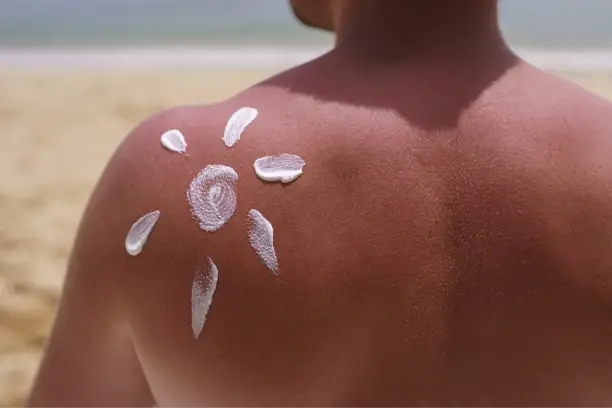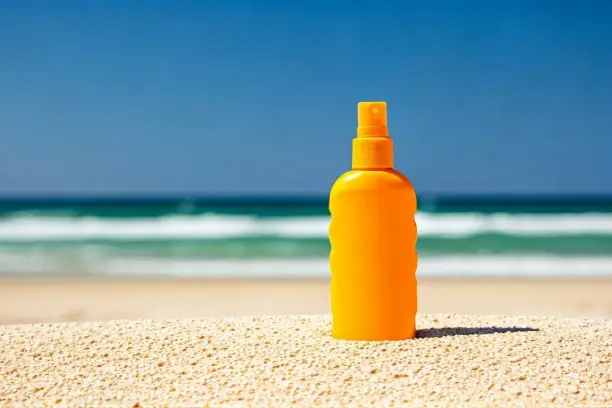Content
Key Highlights
- UV radiation can be harmful all year: You need sun protection even when it’s cloudy. UV rays can get through clouds and still hurt your skin.
- SPF is only part of the information: SPF helps block UVB rays that cause sunburn. Always choose “broad-spectrum” products to guard against aging UVA rays too.
- Know your skin type: Different sunscreens work better for various skin types. Consider if your skin is oily or sensitive when choosing a sunscreen.
- Reapplying is crucial: Regardless of the SPF, you should reapply sunscreen at least every two hours. Do this more often after swimming or sweating.
- Don’t rely only on sunscreen: Use sunscreen along with protective clothing, hats, and sunglasses. It’s also smart to stay in the shade during the hottest parts of the day.
Introduction
Taking care of your skin means keeping it safe from harmful UV rays. It is important to use sunscreen with the right SPF. There are many types of sunscreen, which can feel confusing at first. This guide will help make sun protection easier for you. It gives key details about sunscreen. You will learn about SPF, broad spectrum protection, and how to choose the best sunscreen for your skin type and lifestyle. Let’s begin your journey to healthy and happy skin!
Understanding the Basics of Sunscreen

Many people believe that sunscreen is needed only for beach days to prevent sunburns. The truth is we should protect our skin from the sun every day, not just in summer. The sun emits ultraviolet (UV) rays. This includes UVA and UVB rays. Both types can harm your skin. They can cause early aging, sunburns, and even skin cancer.
Sunscreen is really important for your skin. It acts like a shield to protect it. Sunscreen can either absorb or reflect UV rays. This helps to lower the damage to your skin.
The Importance of Sun Protection
Many people don’t realize how sun damage can make our skin age quickly. It can cause wrinkles, fine lines, dark spots, and skin that feels leathery. UVB rays mainly cause sunburns, which hurt and remind us of being in the sun too long. On the other hand, UVA rays penetrate deeper into the skin. They cause long-term issues like wrinkles and age spots.
The main danger of not being safe from the sun is skin cancer. This type of cancer is very common. If you spend a lot of time in the sun without any protection, it can raise your risk of getting skin cancer, regardless of your skin tone.
Taking care of your skin in the sun is very important for your health. Using sunscreen every day helps prevent sunburn. It can also help you look younger for a longer time and lower your chances of getting skin cancer.
Different Types of Sunscreen Explained
Choosing the right sunscreen depends on whether you prefer chemical or mineral types. Knowing the difference can help you decide which one to use:
- Chemical sunscreens have special filters. These filters soak up UV rays and turn them into heat. This keeps the rays from getting into your skin. These sunscreens feel light, spread easily, and are mostly clear when you put them on.
- Mineral sunscreens use minerals such as zinc oxide and titanium dioxide. These minerals create a barrier that helps reflect UV rays away from your skin. Mineral sunscreens are gentle, friendly to the environment, and great for sensitive skin.
The best sunscreen for you varies based on your needs and preferences. Think about your skin type, how you want it to feel, and any issues like sensitivity or allergies. This will help you choose between chemical and mineral sunscreens. If you need help, you can talk to a dermatologist. They can give you good advice on the best sunscreen for your skin.
Before You Begin: What You Need to Know

Finding the right sunscreen can be hard. But, it is important to know what your skin requires and how sun protection works. When you have the right information, you can make good choices for your skin’s health.
Let’s highlight the important parts about skin types and SPF. This will help you choose the best sunscreen!
Identifying Your Skin Type
Knowing your skin type is key when picking skincare products, especially sunscreen. Your skin type can change how well sunscreen performs, how it looks on your skin, and if it causes any irritation.
Skin types are usually divided into five groups: normal, dry, oily, combination, and sensitive skin. A combination means your skin may be oily in areas like the T-zone and dry in other places. You can discover your skin type by noting how your skin feels during the day.
If you have sensitive skin, pick a sunscreen that is fragrance-free and hypoallergenic. This can help prevent irritation. If your skin is oily, go for a lightweight, oil-free sunscreen. These won’t block your pores or feel greasy. For dry skin, look for thicker formulas. These provide sun protection and give extra moisture.
The Role of SPF in Sunscreen
SPF means Sun Protection Factor. You see this on sunscreen bottles. It tells you how well the sunscreen protects your skin from the sun’s UVB rays. These rays mainly cause sunburn. The U.S. Food and Drug Administration (FDA) states that a higher SPF number means better protection. But, this does not mean it provides double or triple the protection. For example, SPF 30 blocks about 97% of UVB rays. SPF 50 blocks around 98%.
Even though a higher SPF looks better, remember that no sunscreen can block all UVB rays. No matter which SPF you pick, it is important to reapply it every two hours. This is especially important after swimming or sweating to keep yourself fully protected.
Don’t think that a higher SPF means you can be in the sun longer without reapplying. Choosing the right SPF is key. But, staying safe from the sun takes a clever approach. It’s not just about looking at the SPF number.
A Beginner’s Guide to Choosing Sunscreen
Now that you know the basics of sun protection, like skin types and SPF, let’s look for the right sunscreen for you. Picking the best sunscreen can seem like a lot since there are many choices. But don’t worry; it can be easy.
We will make this process easier by splitting it into simple steps. This will help you pick a sunscreen that is good for your skin type and that you can use every day.
Step 1: Assessing Your Skin’s Needs
The first thing to do when picking the best sunscreen is to know what your skin needs. Think about your skin type. Is it dry, oily, a combination, or sensitive? Understanding your skin type will help you choose the right sunscreens, especially those recommended by the Skin Cancer Foundation.
Next, consider how much time you are in the sun each day. Will you be outside for a few hours, sweating, or swimming? Your sun exposure matters when you pick the right SPF and water resistance for safe protection.
If you have sensitive skin, you should choose sunscreens that do not have fragrance and are hypoallergenic. Check for labels that say “sensitive skin” or “dermatologist-tested.” This way, you can be sure the sunscreen will not irritate your skin.
Step 2: Understanding SPF and Broad Spectrum
SPF and broad spectrum protection are key things to think about when you choose sunscreen. Many people may feel unsure about what these terms mean. Understanding each one will help you find a sunscreen that provides full protection.
The SPF number tells you how well sunscreen can protect you from UVB rays. These rays can lead to sunburn and skin damage. A higher SPF number typically offers better protection. But remember, no sunscreen can completely block all UVB rays.
Broad-spectrum protection means the sunscreen safeguards your skin from UVA and UVB rays. To ensure you are completely protected, check for the term “broad spectrum” on the labels of the sunscreen.
| Feature | UVB Rays (Sunburn) | UVA Rays (Aging, Skin Cancer) |
|---|---|---|
| SPF Number | Measures protection against | Does not directly measure protection against |
| Broad Spectrum | Protects against | Protects against |
Step 3: Selecting Between Chemical vs. Physical Sunscreens
Once you learn about SPF and broad spectrum protection, it’s time to pick between chemical and mineral sunscreens. Mineral sunscreens are sometimes called physical sunscreens. Both types protect your skin from harmful UV radiation. They do this in different ways and have different ingredients.
Chemical sunscreens have filters that absorb UV rays and turn them into heat. This creates a chemical reaction that helps lessen the damage UV rays can do. These sunscreens feel light on the skin, apply smoothly, and are less likely to leave a white residue.
Mineral sunscreens keep your skin safe by forming a barrier that reflects UV rays. They mainly contain zinc oxide and titanium dioxide. These sunscreens are softer and better for sensitive skin.
Step 4: Considering Water Resistance
If you plan to be outside, especially near water or while sweating, it’s crucial to use a water-resistant sunscreen for sun safety. Water resistance tells you how well the sunscreen stays on your skin when it gets wet or you sweat.
You can find sunscreens that claim to be water-resistant for 40 or 80 minutes. A sunscreen that lasts for 80 minutes provides better protection. This is great if you want to swim, sweat, or stay outside for a long time. It’s best to choose water-resistant products to ensure they work well.
Water resistance does not mean that something is fully waterproof. No matter how high the water resistance rating is, you should put on sunscreen every two hours. This is very important after swimming or when you towel off.
Step 5: Checking for Skin-Sensitive Ingredients
If you have sensitive skin or allergies, read the ingredient list of your sunscreen. This way, you can avoid irritation. Some sunscreens have chemical ingredients, fragrances, or preservatives. These can cause reactions for people with sensitive skin.
Choosing sunscreens with zinc oxide and titanium dioxide is often better for your skin. These mineral ingredients usually cause less irritation. Look for products that are “fragrance-free,” “hypoallergenic,” and “dermatologist-tested.” These labels indicate that the sunscreen has been tested to reduce the risk of allergic reactions.
It is wise to do a patch test before using a new sunscreen. This is really important if your skin is sensitive. Just put a little on a spot that’s not easy to see, like your inner forearm. Watch for any bad reactions before you use it on your face or body.
Application Tips for Effective Protection
Choosing the right sunscreen is very important for good protection. How you apply it is also very important. If you put on sunscreen the right way, you will cover all areas properly. This helps you get the best protection possible.
Here are some simple tips to help you apply sunscreen more effectively:
How Much Sunscreen to Apply

One common mistake people make is not using enough sunscreen. To protect your entire body, skin doctors say you should use about one ounce of sunscreen. This amount is about what fills a shot glass. It may feel like a lot, but using enough is very important. This way, the sunscreen can work well and do what its SPF rating promises.
When you use sunscreen, make sure your skin is clean and dry first. Spread a good amount on all areas that are exposed. Don’t forget to cover spots people often miss. This includes your ears, the back of your neck, and the tops of your feet. For your face, use enough sunscreen that is about the size of a nickel.
Don’t hesitate to reapply! It’s very important to use sunscreen more often, every two hours. This is especially needed after you swim or sweat.
The Right Way to Reapply Sunscreen
Reapplying sunscreen during the day is really important. It helps keep your skin safe from harmful UVA and UVB rays. Even if your sunscreen is water-resistant or has a high SPF rating, remember to put it on again every two hours.
When you put on your product again, make sure to use enough of it. Doing this will cover all the skin that is showing evenly. If you swim or dry off with a towel, you need to put it on again. This goes for water-resistant products too. Water and rubbing can make the product work less well over time.
It’s important to know that sun exposure adds up. Even short periods in the sun without protection can increase your chances of sun damage. By reapplying sunscreen often, you can reduce this risk and stay safe.
Conclusion
Remember, the best sunscreen formulas are the ones you will use a lot. It’s important to know your skin type and what SPF you need. Choosing the right sunscreen for you is key for effective sun protection. You can pick a chemical or physical sunscreen. Just make sure it offers broad-spectrum coverage and is water-resistant. Don’t forget to use enough sunscreen and reapply often for the best protection. With smart choices based on your skin type and likes, you can enjoy the sun safely. Start your sunscreen journey with confidence and feel the warmth of the sun while staying protected.




